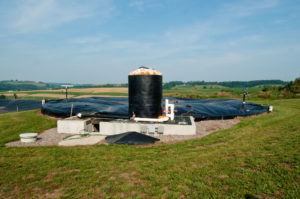Electricity generated from renewables has grown rapidly in the past few decades. However, the continued growth of solar and wind is imperiled by the high costs of grid integration. While solar and wind energy enjoy low operating costs, they are intermittent and variable on multiple time scales. Thus they may not be available when needed. Storing electrical energy is costly and so is providing backup power. Thus grid integration costs rise with the growth of solar and wind generation.

USDA Photo
There is a strong positive correlation between installed wind and solar capacity versus the residential energy price in 21 member countries of the European Union. In other words, the price paid by consumers for electricity rises as more electricity from solar and wind is produced. Public support for renewable electricity will most likely be undermined as this trend continues or intensifies with greater penetration of solar and wind into the grid.
Thus to mitigate climate change and provide sustainable electricity to underpin long term prosperity, we must have low carbon electricity that can be supplied on demand to make up for the intermittent and variable nature of wind and solar electricity.
Biogas (roughly 55% methane/45% carbon dioxide) and biomethane (renewable natural gas) are promising biofuels to provide “dispatchable” electricity that can fill in when solar and wind are not available. Biogas can be produced from essentially any organic material via anaerobic digestion (AD), including a variety of wastes, residues and purpose-grown energy crops.
AD is a well-developed, patent-free, mature technology that can be rapidly scaled up. Recent experience in Italy indicates that a doubling time of 18 months for installed AD capacity is possible. Furthermore, the existing natural gas grid provides a low-cost means of storing and distributing biomethane where it is needed, in contrast to the expensive and problematic storage and distribution of electricity from solar and wind.
Under policy mechanisms such as California’s Low Carbon Fuel Standard, the production of biomethane from organic wastes is economically attractive today. However, organic waste streams alone are insufficient to achieve the scale necessary for biomethane to meet national needs for low carbon energy. To provide adequate amounts of low carbon biomass, farmers can grow sequential energy crops without reducing food production. Incentives and mechanisms for farmers to produce and then aggregate biomethane are necessary to generate very large scale biomethane to provide diverse low carbon energy services.
Thus biogas and biomethane would seem to merit much greater research, development, and public policy support as potential low-carbon fuels that can minimize the costs of integrating increasing amounts of solar and wind electricity into the grid, while also providing other energy services.
Biomass does indeed present the opportunity to complement wind and solar. It provides a form of stored energy that can be dispatched as needed for backing renewables. That’s undoubtedly its… Read more »
Thanks for friendly and thoughtful feedback, Roger. I had hoped for many more responses to this post, but I am happy to respond to your generally positive comments. Waste streams… Read more »
Thanks for the link to the article on Biogasdoneright — and for the work you’ve done to support that effort. It gives me a glimmer of hope for the planet’s… Read more »
Hi Roger: Yes, the biogas scale issue is critical. We are w0rking on an article on that issue now. I will share it here when we are done. Some of… Read more »
Dr. Dale, Your biogas proposal definitely sounds like an approach worth researching to supplement intermittent solar/wind power. If it were cost-effective and substantially reduce greenhouse gas emissions, it would be… Read more »
Hi Henry, Good questions. 🙂 We are working on a detailed economic analysis of bioenergy (biogas power, RNG and LNG) produced using the Biogasdoneright approach. The preliminary answer seems to… Read more »
Bruce, thank you for the excellent questions regarding the potential for biogas and other forms of biomass as renewable, reliable baseload power sources. Biofuels can result in considerable economic development,… Read more »
Thank you, Carol. Lots of good comments in your reply. I have been working for the past four years with a group of Italian farmers to help them document and… Read more »
The major premise of this argument is that “to mitigate climate change and provide sustainable electricity to underpin long term prosperity, we must have low carbon electricity that can be… Read more »
Actually, I cited two reasons: one connected with climate change and the other with long term, sustainable prosperity. A decade ago I was also a skeptic regarding climate change. But… Read more »
Bruce: Thanks for taking the time to reply. You say: “I think the evidence supporting human-caused climate change is very strong.” I’m confused. For me, the the “evidence” is potentially… Read more »
The likely long-term low-cost low-carbon dispatable electricity source for electricity grids with wind and solar is nuclear with heat storage. Heat storage costs are about an order of… Read more »
Thanks, Charles. Would you please send me any published information you have on the cost of heat storage using nuclear, particularly any comparisons with other means of energy storage? I… Read more »